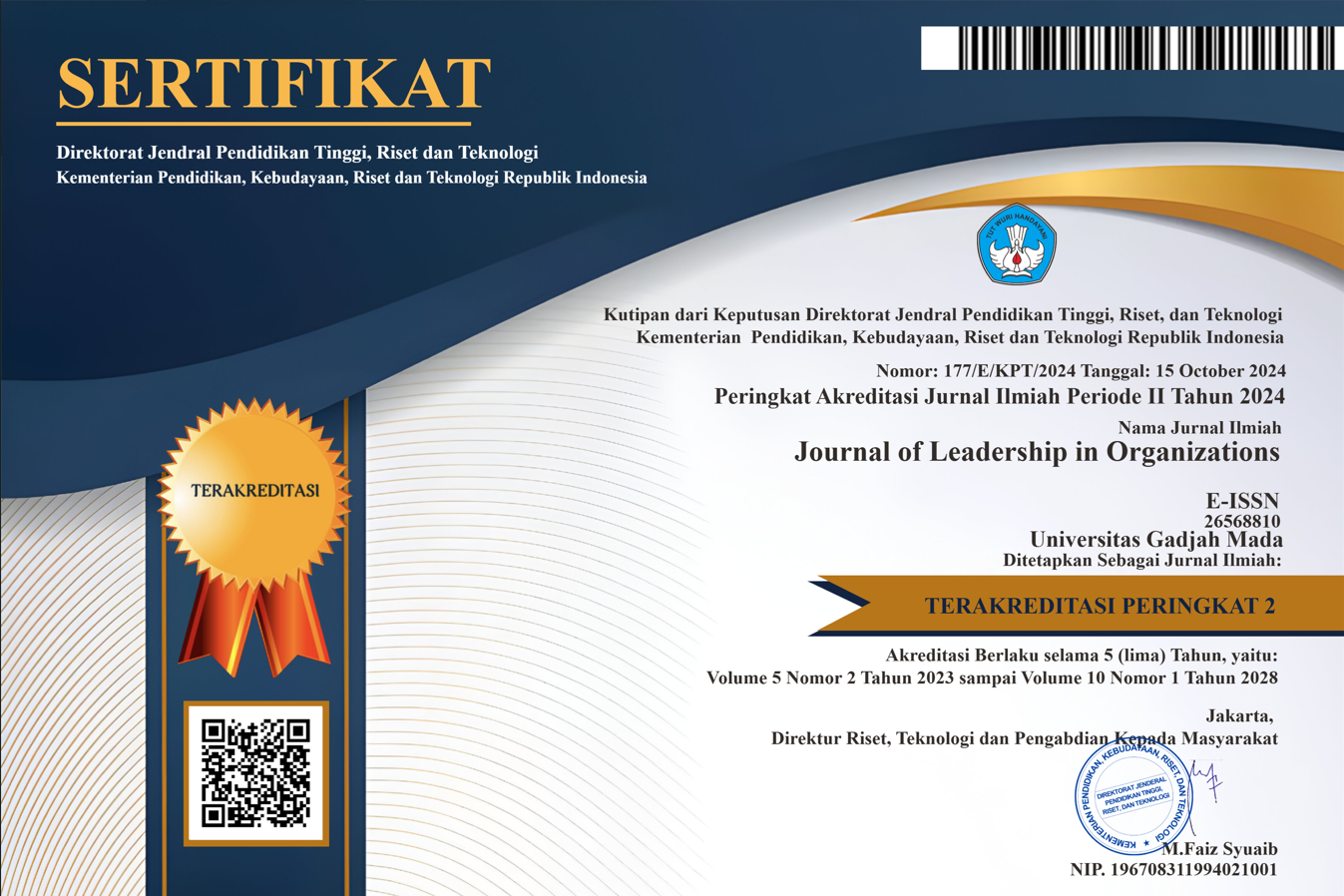11 LEADERSHIP PRINCIPLES OF INDONESIAN NATIONAL ARMED FORCES IN NATURAL DISASTER MANAGEMENT
Yusuf Ali(1*), Aris Sarjito(2), Susanto Susanto(3)
(1) Indonesia Defense University
(2) Indonesia Defense University
(3) Indonesia Defense University
(*) Corresponding Author
Abstract
Introduction: Natural disasters is one of the real threats which cause the loss of life, property, and refugees.
Background Problems: The role of the Indonesian National Armed Forces (TNI) in natural disaster management becomes an interesting thing to study when natural disasters occur in Indonesia.
Novelty: This article reveals the analysis result of the implementation of TNI’s principles in disaster management, especially in the following regions: Palu, Sigi and Donggala (Pasigala), Central Sulawesi Province.
Research Methods: The research was conducted using qualitative research methods. The collected data was analyzed using qualitative data analysis techniques.
Finding/Results: Based on the results of the study, it was concluded that the role of TNI’s leadership style was very prominent to fill the vacancies of Regional Leaders in certain areas experiencing disaster. The support of TNI personnel in natural disaster management cannot be separated from the implementation of 11 TNI leadership principles, which consist of: Takwa, Ing Ngarsa Sung Tulada, Ing Madya Mangun Karsa, Tut Wuri Handayani, Waspada Purba Wisesa, Ambeg Parama Arta, Prasaja, Satya, Gemi Nastiti, Belaka, and Legawa. The application of these principles can be seen in emergency response situations, where TNI plays an important role, in which their instructions were conformed by the community. In disaster mitigations, they evacuated victims, rebuilt worship places, looked around for logistical sources for the community, were incharged for possible criminal actions, such as eradicated looting acts, arrested the perpetrators and handed them to the local Police. Thus, it can be said that the leadership of TNI has succeeded in handling natural disasters in Pasigala, Central Sulawesi. It can be then recommended that the Indonesian Government and stakeholders should improve the quality of training and education for leadership and disaster management by implementing the leadership principles of TNI, as well as synergizing with TNI in disaster management
Keywords
Full Text:
PDFReferences
Indonesia. (2007). Undang-Undang Republik Indonesia Nomor 24 Tahun 2007 tentang Penanggulangan Bencana.
Kementerian Pertahanan RI. (2015). Peraturan Menteri Pertahanan Republik Indonesia Nomor 06 Tahun 2015 tentang Pedoman Pelibatan TNI Dalam Penanggulangan Bencana.
Covey, S. R. 2009. Principle-Centered Leadership. Epub Edition. Newyork: ReosettaBooks LLC.
Effendy, O. U. 2009. ILMU KOMUNIKASI: Teori dan Praktek. Bandung: Penerbit Pt Remaja Rosdakarya.
Miles, M. B., Huberman, A. M., & Saldaña, J. (2014). Qualitative Data Analysis: A Methods Sourcebook. Edition 3. United States of America: SAGE Publications Inc.
Nurjanah, et. al. (2012). Manajemen Bencana. Bandung: ALFABETA.
Pusat Studi Gempa Nasional. (2018). Kajian Gempa Palu Provinsi Sulawesi Tengah 28 September 2018 (M7.4). Bandung: Pusat Penelitian dan Pengembangan Kementerian PUPR.
Sugiyono. (2015). Metode Penelitian Pendidikan. Pendekatan Kuantitatif, Kualitatif, dan R&D. Bandung: Alfabeta.
Nugroho, S. P. (2016). Kerjasama Sipil-Militer dalam Penanggulangan Bencana (Studi Kasus Tanggap Darurat Banjir Jakarta 2013, 2014, 2015). Jurnal Dialog Penanggulangan Bencana, 7(2), 103-110.
Puspen TNI. (2019). Panglima TNI: Dukungan TNI di Wilayah Bencana Untuk Wujudkan Stabilitas Sosial Masyarakat. Retrieved from https://ppid.tni.mil.id/view/32437225 /panglima-tni-dukungan-tni-di-wilayah-bencana-untuk-wujudkan-stabilitas-sosial-masyarakat.html.
Redaksi Beritagar. (2018). Pemerintah Daerah Harus Hadir Segera Saat Pascabencana. Retrieved from https://beritagar.id/artikel/editorial/pemerintah-daerah-harus-hadir-segera-saat-pascabencana.
Redaksi Jurnal Teritorial. (2011). Profil Korem 132/Tadulako Palu. Retrieved from http://jurnalteritorial.blogspot.com/2011/09/korem-132tadulako-palu.html.
Redaksi Medcom.id. (2018). Peran TNI Teruji dalam Mitigasi Bencana. Retrieved from https://www.medcom.id/nasional/peristiwa/9K5EdG0K-peran-tni-teruji-dalam-mitigasi-bencana.
Suwandi, I. (2018). Kesiapan dan Kesigapan TNI dalam Penanganan Bencana Alam. Retrieved from https://www.kompasiana.com/oktina21/58649471147b61fc04f59f15/kesiapan-dan-kesigapan-tni-dalam-penanganan-bencana-alam?page=all.
Yulika, N. (2018). Korban Meninggal Gempa Lombok Terus Bertambah, Kini Jadi 564 Orang. Retrieved from https://www.liputan6.com/news/read/3656228/korban-meninggal-gempa-lombok-terus-bertambah-kini-jadi-564-orang.
Article Metrics
Refbacks
- There are currently no refbacks.
Copyright (c) 2021 Journal of Leadership in Organizations

This work is licensed under a Creative Commons Attribution-ShareAlike 4.0 International License.
| Journal of Leadership in Organizations |
| Journal of Leadership in Organizations (JLO), with registered number ISSN 2656-8829 (Print) and ISSN 2656-8810 (Online), is published by the Center for Leadership Studies, Department of Management, Faculty of Economics and Business, Universitas Gadjah Mada. The content of this website is licensed under a Creative Commons Attribution-ShareAlike 4.0 International License |
| © 2019 Journal of Leadership in Organizations | |





_logo2.png)


.png)




